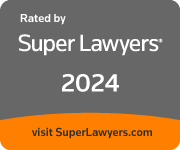
Far too often, people confuse trademarks, patents, and copyrights. They may even think they can use the words interchangeably, but that couldn’t be further from the truth. While they are all types of intellectual property, they are designed to protect very different creations, so understanding their differences is all the more critical.
The Differences Between Trademark, Patent, and Copyright
If you’re reading this blog, you know that trademarks, patents, and copyrights all are used to protect intellectual assets. Let’s take a look at the specific types of property that each one protects in order to determine which one is right for you.
What is a Trademark For?
A trademark protects brand names, logos, and other words or design elements used to identify the source of a good. You may also hear the words “service marks” when discussing the protection of words or phrases. In this case, the identifying marks refer to a service instead of goods. Common law rights in trademarks and service marks begin to accrue as soon as you start using these marks in commerce. However, it is almost always advisable for applicants to file an application with the United States Patent and Trademark Office (USPTO) to obtain federal registrations for their trademarks.
The government has very specific requirements for trademark registration. For example, if you want to protect a word, phrase, or symbol that identifies your goods or services, it cannot be a generic or commonly used phrase. You also can’t use another person’s name without their consent, and a trademark can’t consist of a surname only. If your application for trademark registration is approved, you can be legally protected indefinitely, provided you renew your trademark registration at the appropriate intervals.
What is a Patent For?
A patent provides inventors with protection for their inventions such as products or processes. When you obtain a patent, you have the legal right to prevent others from making, using, or selling your invention for a limited time, which is typically 20 years from the filing date of your patent application. In many cases, businesses benefit from a provisional patent application, which is an informal application that gives the applicant one year in which to file a full “utility” patent application yet still obtain the priority of the provisional application. Provisional applications are a good way to quickly get a filing date, which is particularly important since the U.S. is a first-to-file country (i.e., the first inventor to the Patent Office is awarded the patent). Provisional applications, which can be easily drafted by patent lawyers if you do not want to DIY, also allow an applicant to advertise that his or her invention is “patent pending”.
For the USPTO to grant a patent, the invention must be novel and non-obvious. You also must disclose the invention to the public by way of the patent application, so that when the patent expires the invention will be in the public domain for others to practice. Since products and processes can vary greatly, it makes sense that the USPTO would offer different types of patents. In fact, the Patent Office classifies applications into three distinct categories:
- Utility Patent: A utility patent protects new or improved products, processes, and machines. With it, you can prevent competitors from making, using, or selling your claimed invention for the life of the patent (provided that you pay your scheduled maintenance fees to keep the patent in force).
- Design Patent: Unlike a utility patent, a design patent applies only to the unique ornamental appearance of a manufactured product. It has nothing to do with structure or utilitarian features. Instead, it is limited to visual elements that create a distinctive look. In some cases, however, inventors apply for design and utility patents for the same product, as some products have new ornamental and functional features.
- Plant Patent: Inventors who create a new plant may file for a plant patent so that they can protect its new and unique characteristics. As with a utility patent, a plant patent prevents others from making, selling, or using your patented plant. To qualify for this type of patent, the plant must reproduce asexually to create a genetically identical specimen through root cuttings, bulbs, division, or grafting and budding.
What is a Copyright For?
It’s not uncommon for business owners to confuse copyrights and trademarks since both typically involve words. However, it’s important to know that they are entirely different forms of intellectual property, and they are registered with separate offices. For copyright applications, you would file through the U.S. Copyright Office instead of the USPTO.
Copyrights also find themselves in a separate category because they cover any original work produced in the form of writings, art, music, or architecture, for example. You may not copyright an idea for any of those creative works. It must be in its physical form.
A copyright gives the owner the sole right to display or perform the work. It also allows you to share or license the material for others to use the creative work; however, there is one exception to the rule. The “fair use” doctrine allows limited use of copyrighted material if it’s used for specific purposes, such as:
- Criticism & Commentary
- Education
- News Reporting
- Scholarly Work
- Parody
- Research
While you are not required to do so, filing for copyright gives enhanced protections in the event of legal disputes. Copyrighted materials are protected for the entire life of the author plus 70 years after their death.
Who Can Help You Obtain a Trademark, Patent, or Copyright?
Have you recently created an invention that is critical to your business? Do you plan to make money off of your latest creative work? If you answered yes to either question, then you’ve come to the right place. While there are several law firms that offer intellectual property law services, not all of them specialize in the field. At Allen, Dyer, Doppelt + Gilchrist, we have the speciality you need to obtain a trademark, patent or copyright. If you’re still unsure as to what you need, our intellectual property lawyers can also advise you on which form of IP protection is right for you.
Where To Find Lawyers Who Practice Intellectual Property Law?
Here at Allen, Dyer, Doppelt, & Gilchrist, P.A, we have helped countless individuals and business owners with their intellectual property since 1972. Over that time, we have worked hard to serve Florida residents and businesses, but we also proudly serve clients all over the U.S. and internationally. We encourage you to contact our office today to learn more about the different types of intellectual property and how our experts can help you best protect yours.
About the Authors
John F. Woodson, II is a registered Florida patent attorney based in the Orlando-area. His intellectual property practice areas include patent prosecution, patent infringement studies and client counseling.

Jaafar Choufani is an attorney at ADD+G’s Orlando office. He practices in the area of trademarks, copyrights and licensing and intellectual property transaction matters. Additionally, he also handles business law matters pertaining to corporate formation, acquisition, and governance.

Share This



